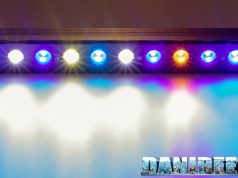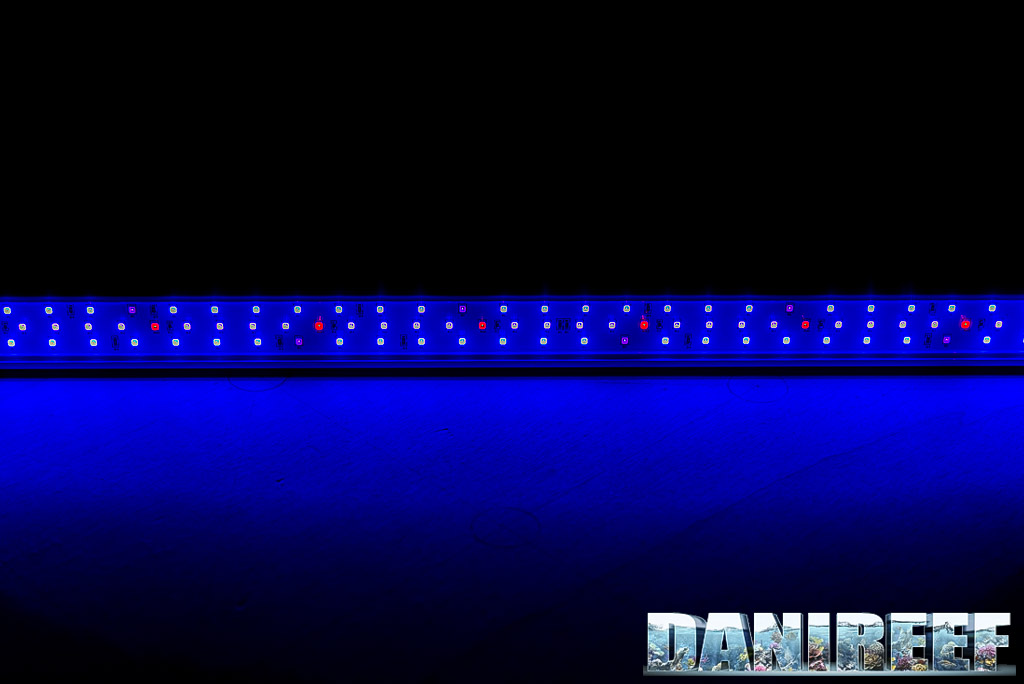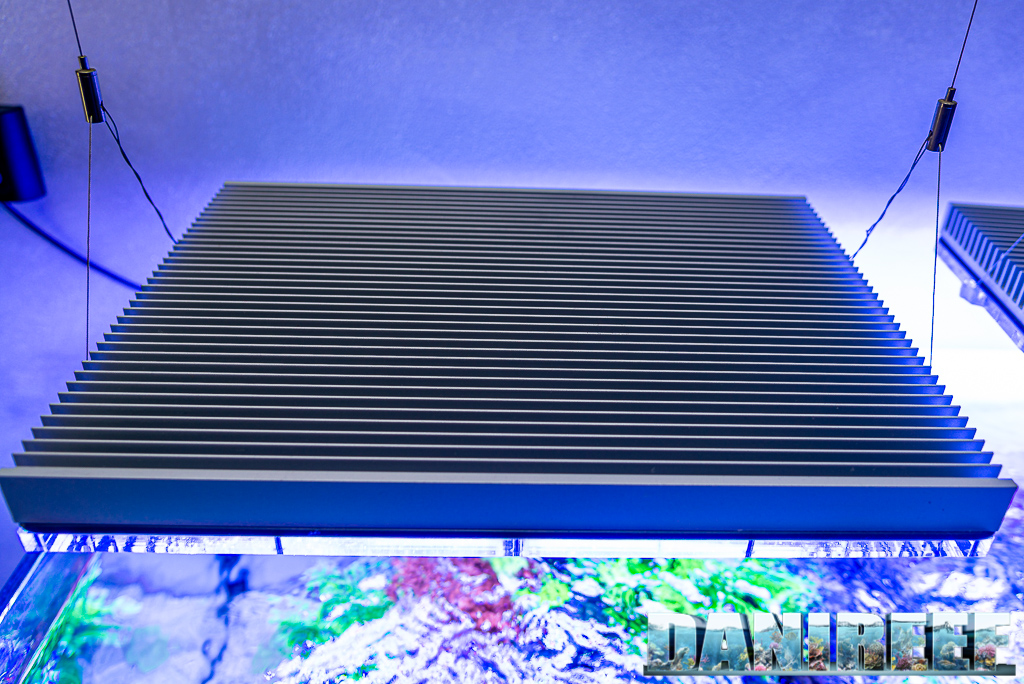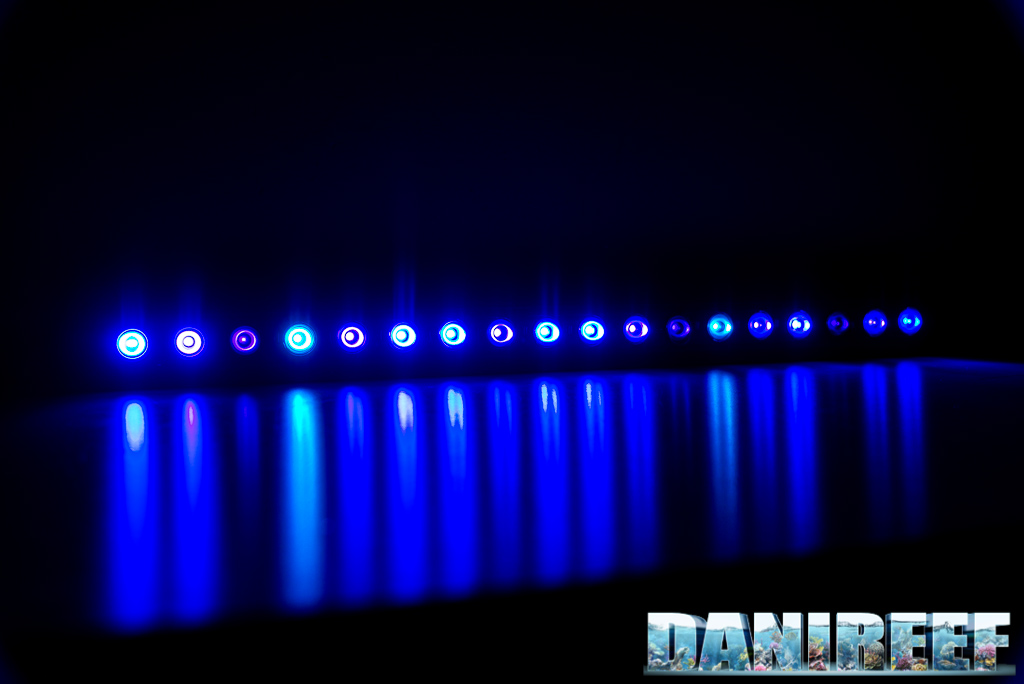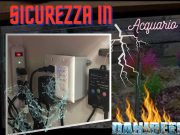Our new working method for the PAR measurement
During the long nights spent on our forum we always wondered how could we compare PAR from different ceiling lights. Even though we had the perfect device, the Quantum Meter MQ-510 di Apogee, we always referred only to the value measured at the centre at 20 cm of distance.
The Quantum Meter MQ-510 measures the PAR, expressed in PFFD that is photosynthetic photon flux density in μmol m-2 s-1. This device is calibrated to work underwater, so if it’s in air the measured value has to be divided by 1,32 that’s the dive factor. We have to do the conversion. The values you’re going to see are correct.

We decided to make a square base of 70×70 cm, we set 17 fiducial points where we have to place the sensor Quantum Meter MQ-510 and we also made 4 lifts of 20, 40 and 60 cm for the ceiling light, so to have the same distance from the sensor. This will allow us to create curves in the space that can be compared to these of other ceiling lights, all at the same distances. Notice that this distance is measured between the base of the sensor and the ceiling light. In reality it should be decreased of 3,5 cm that is the height of the measurement cylinder.
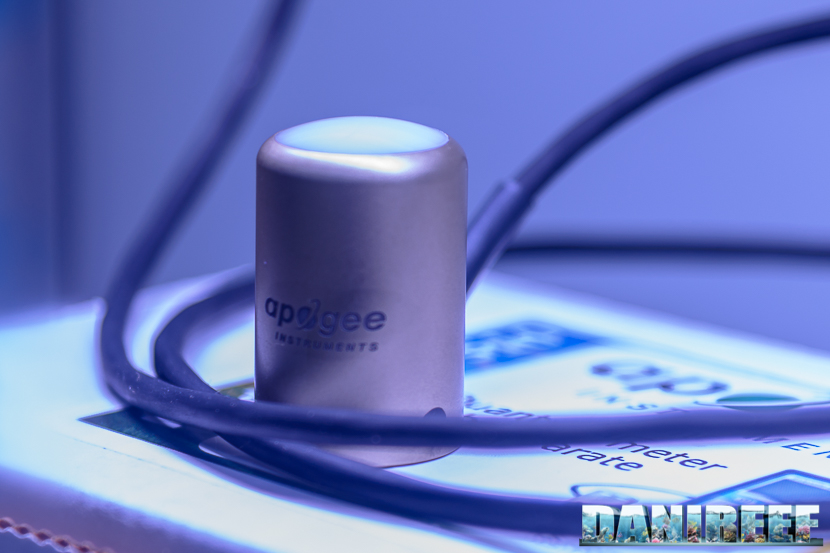
In total the three measurements are made from 17, 37 and 57 cm of distance. Because they’re done in air they will be corrected.
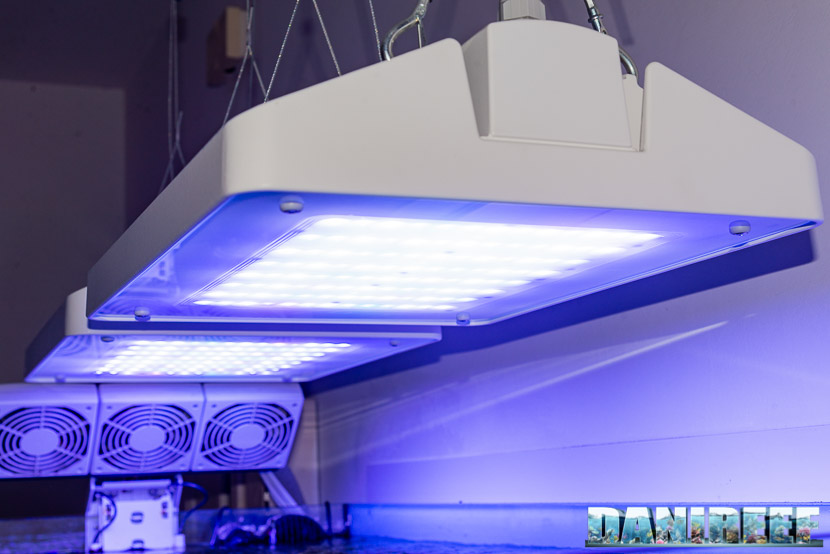
PAR measurement from 17 cm of distance

This is the condition of the test. Below there are the chart and the device, above the ceiling light placed on the aluminum bars.
Here the collected values:
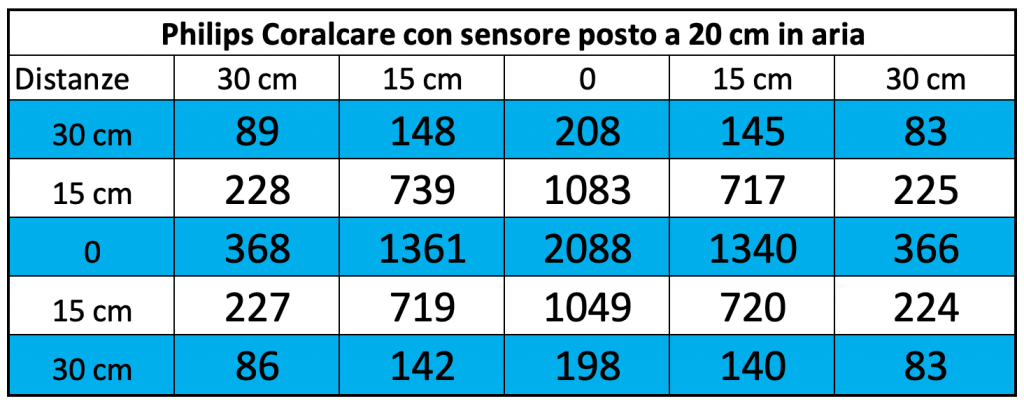
And for the corresponding chart we will use in uniformity the same scale for ceiling lights with similar power.
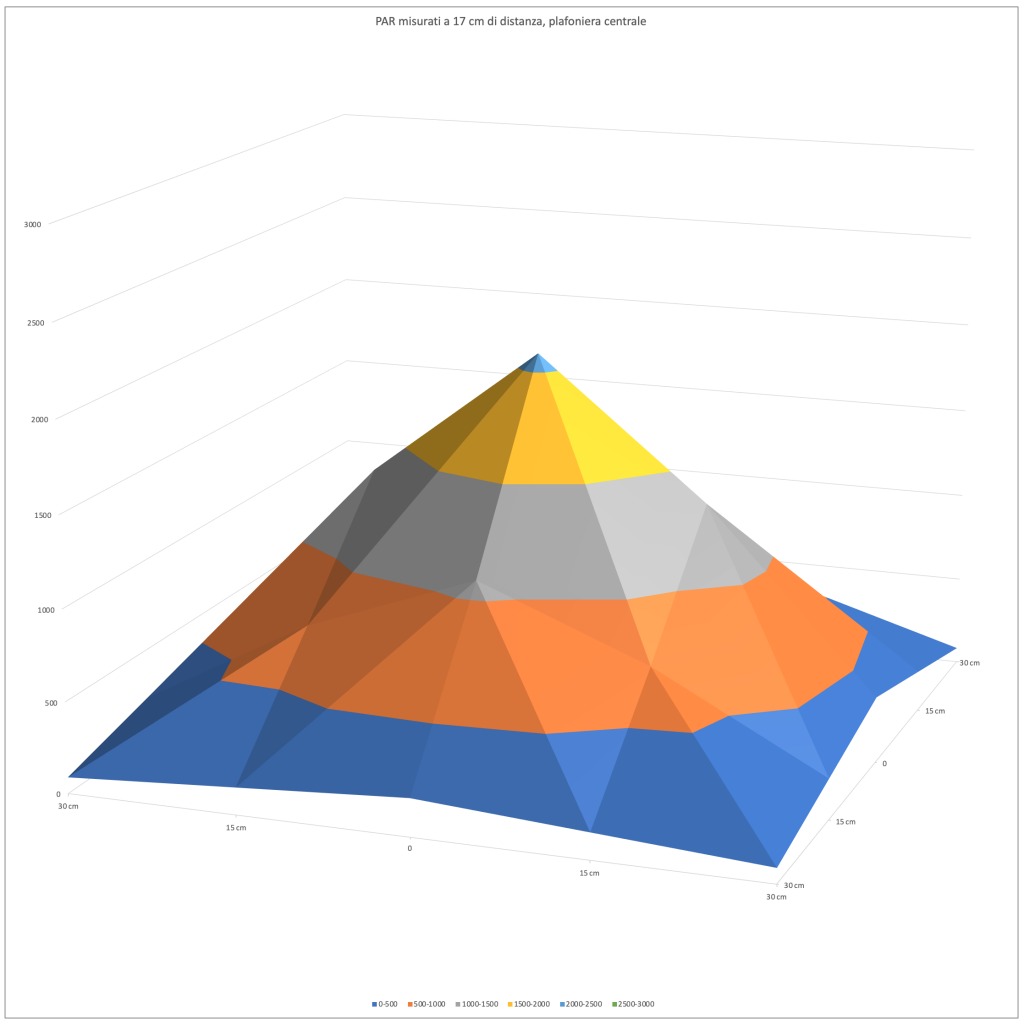
Because the ceiling light was very close to the sensor, the PAR quickly decrease on the sides. But the chart (embracing an area of 60×60 cm) will show its usefulness when we will compare different ceiling lights.
PAR measurement from 37 cm of distance
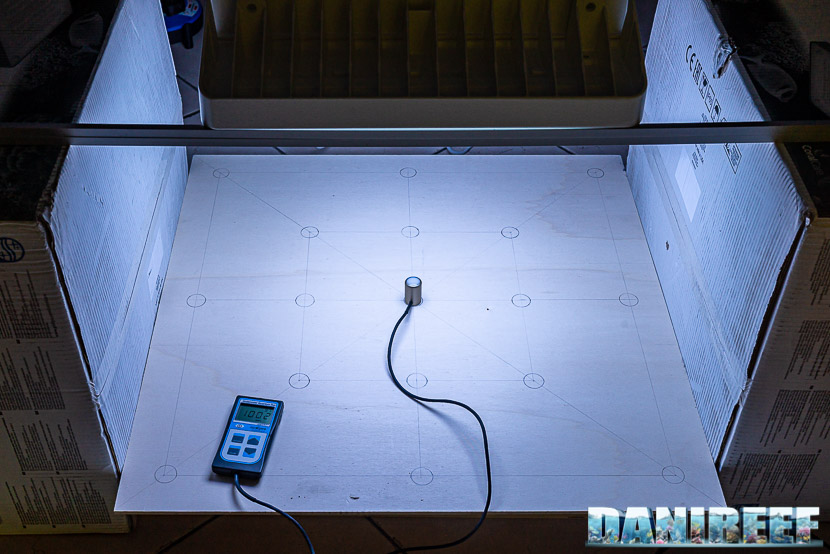
This is the condition of the test. Below there are the chart and the device, above the ceiling light placed on the aluminum bars.
Here the collected values:
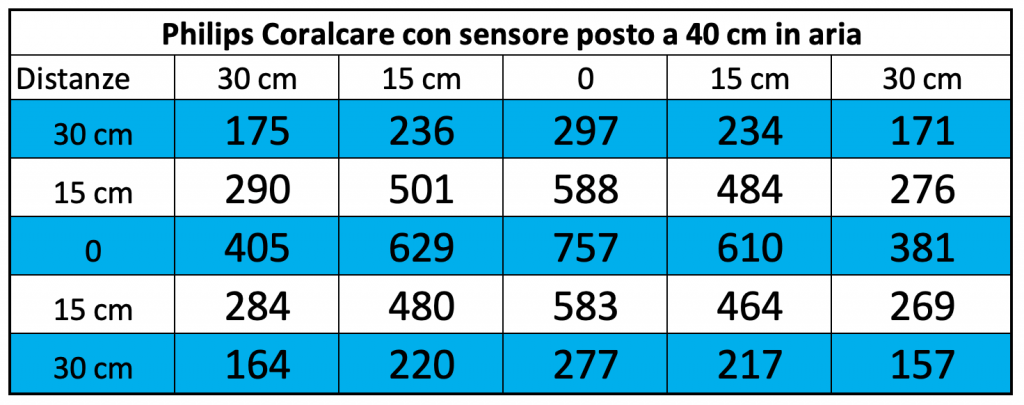
And for the corresponding chart we will use in uniformity the same scale for ceiling lights with similar power.
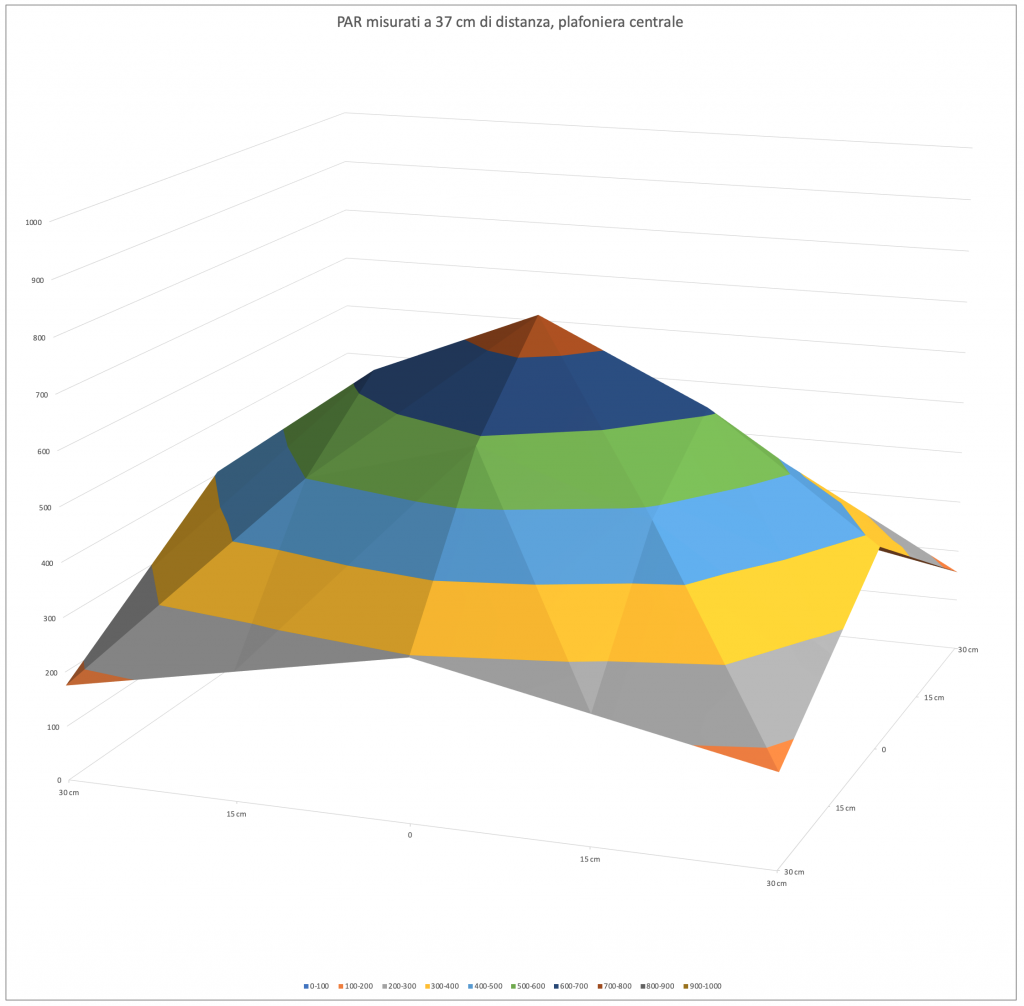
With a bigger space between ceiling lights and sensor, decreases the difference between PAR in the middle and on the sides. The light spreads, but the central value decreases from 2088 to 757 μmol m-2 s-1.
It stands out the full covering.
PAR measurement from 57 cm of distance
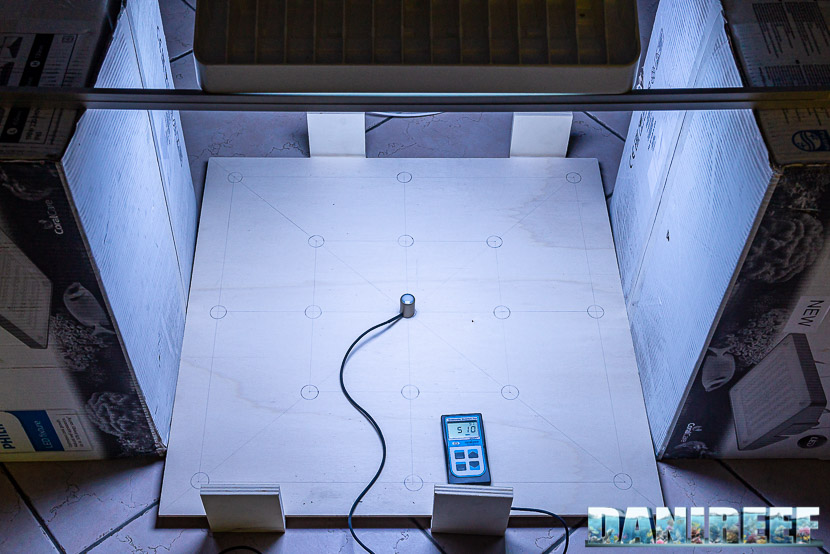
This is the condition of the test. Below there’s the chart, and from this distance it is very visible, the device, and the ceiling light placed on the aluminum bars.
Here the collected values:
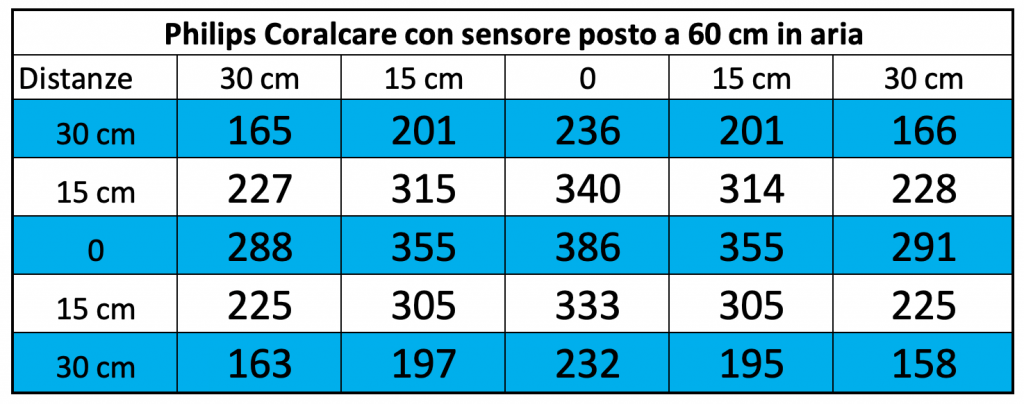
And for the corresponding chart we will use in uniformity the same scale for ceiling lights with similar power.
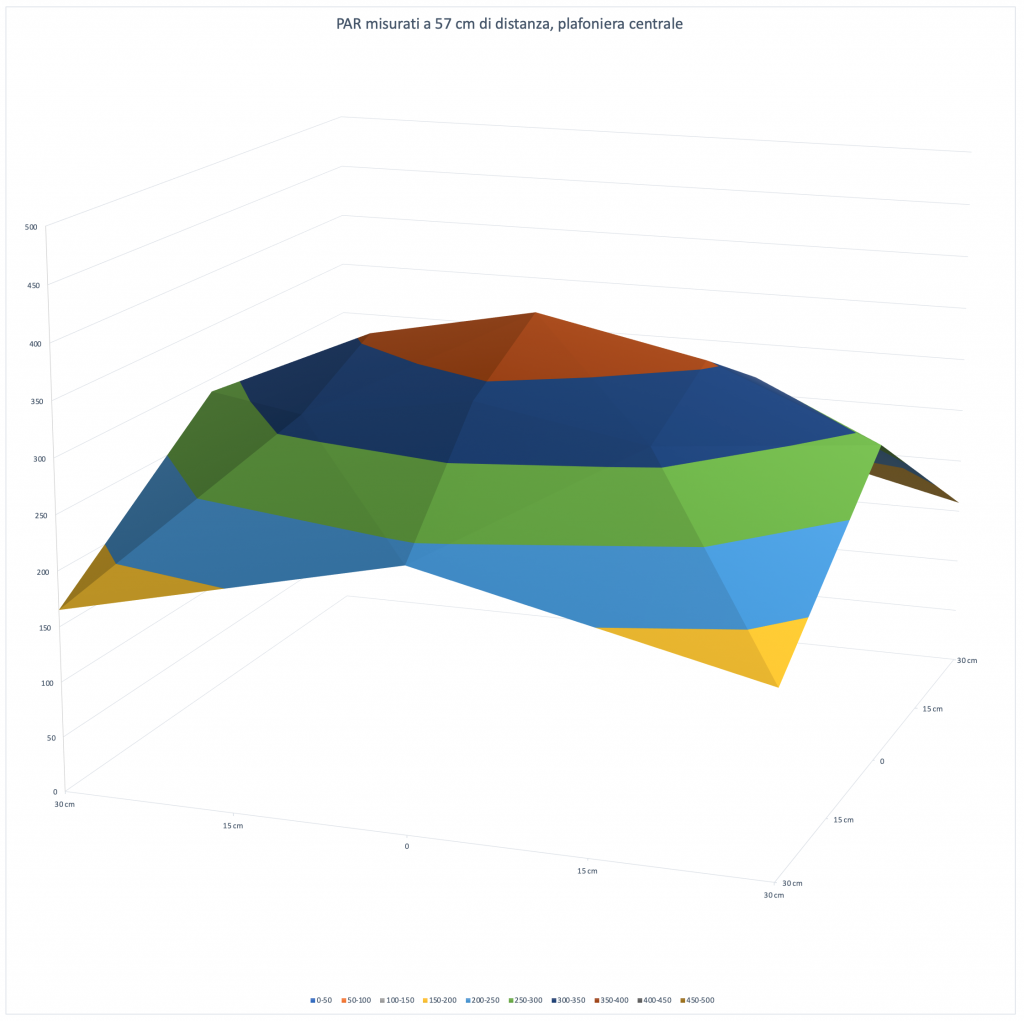
Increasing even more the space between ceiling light and sensor, it decreases even more the difference between PAR in the middle and on the sides. We have more uniformity, as expected. The light spreads, but the central value decreases from 2088 to 757 and to 386 μmol m-2 s-1.
Now it’s clear that the covering is wide.
The PAR in the middle in the different configurations
Let’s continue with our technical measurements. We can see how, in a chart, the PAR collected in the middle decrease in the three different distances of the tests.
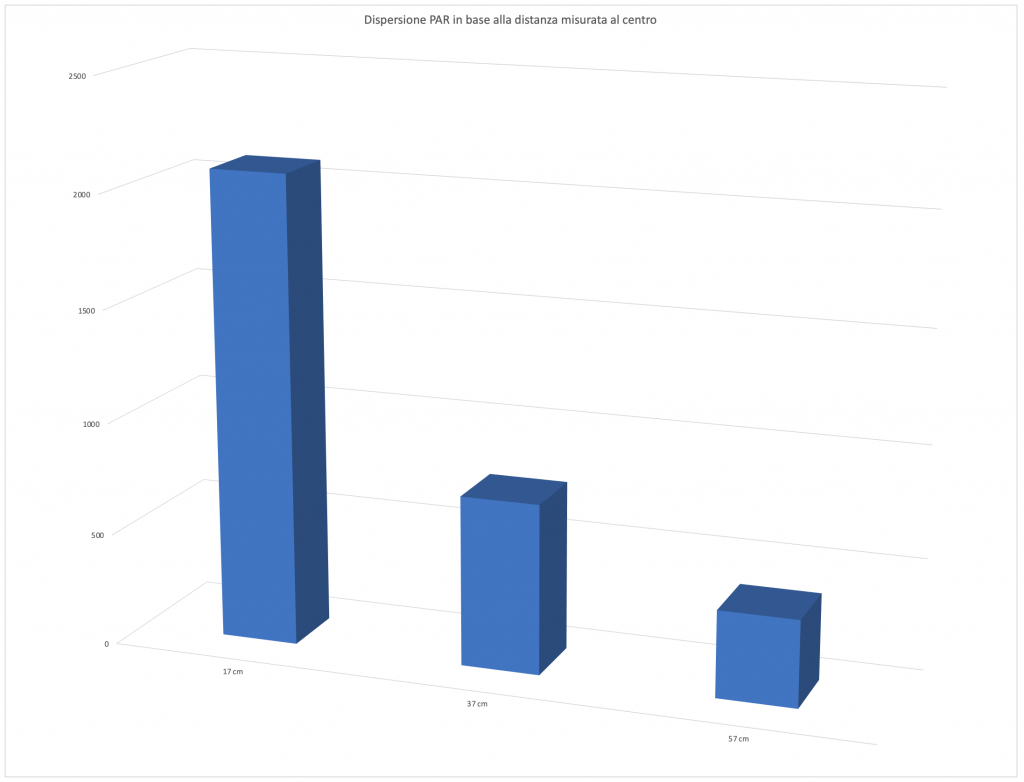
Energy variation of the Philips CoralCare depending on the distances
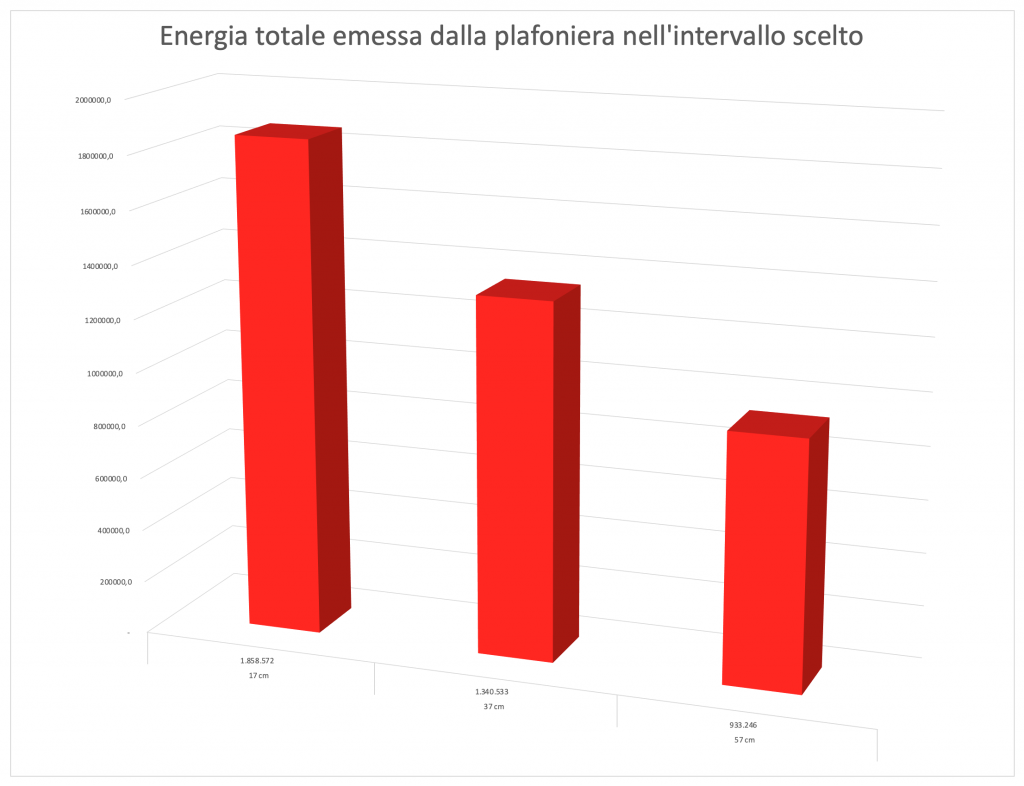
I think this one is the most significant data: the energy variation. Actually, I calculated the volumes under the three curves previously seen. Because it’s obvious that moving away from the ceiling light the PAR also decrease. In this way you can consider all the light energy contained in the 60×60 cm area subtended by the ceiling light. And the three values 1.858.572, 1.340.533 and 933.246 aren’t so different when you consider the value in the middle.
Values per channel in the middle in the three distances
We also measured the values per each channel, but only in the middle, in order to give you an idea of the contribution of the different channels on the PAR produced.
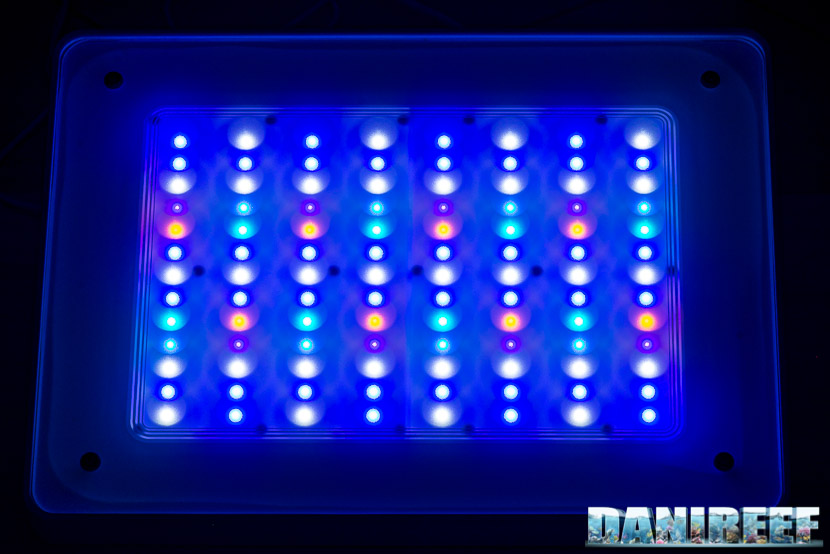
Here above there’s the Philips CoralCare with all the LED turned on.
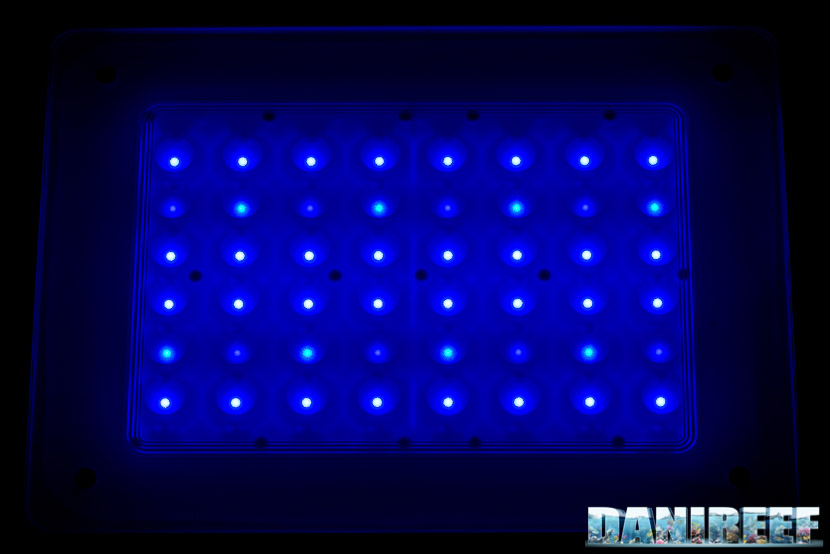
Here there’s just the channel blue.
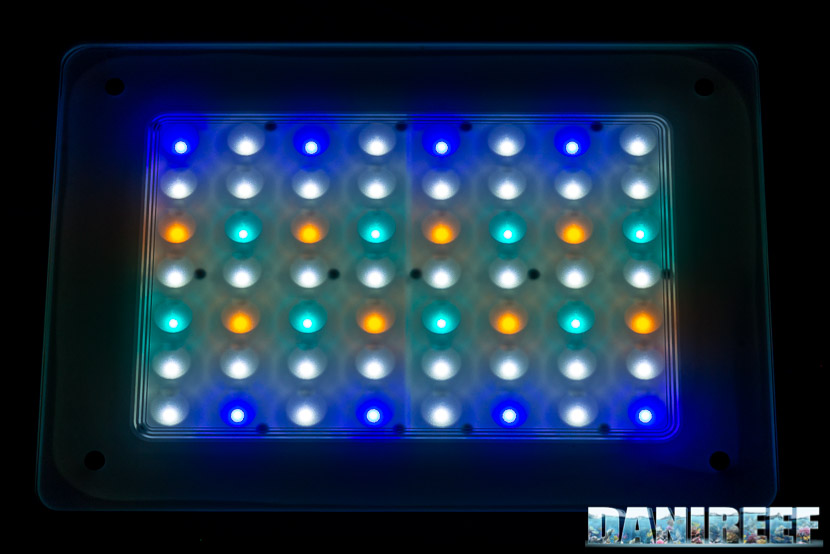
And here the whites channel, and some blues.
Now we see the collected values:
| Distance = 17 cm | Distance = 37 cm | Distance = 57 cm | |
| Blue channel | 960 μmol m-2 s-1 | 345 μmol m-2 s-1 | 175 μmol m-2 s-1 |
| White channel | 1118 μmol m-2 s-1 | 414 μmol m-2 s-1 | 213 μmol m-2 s-1 |
The white channel has a higher PAR number than the blue channel, that is about 20%.
Let’s continue on page three with the costs, the comparisons with other ceiling lights and our final comment.




